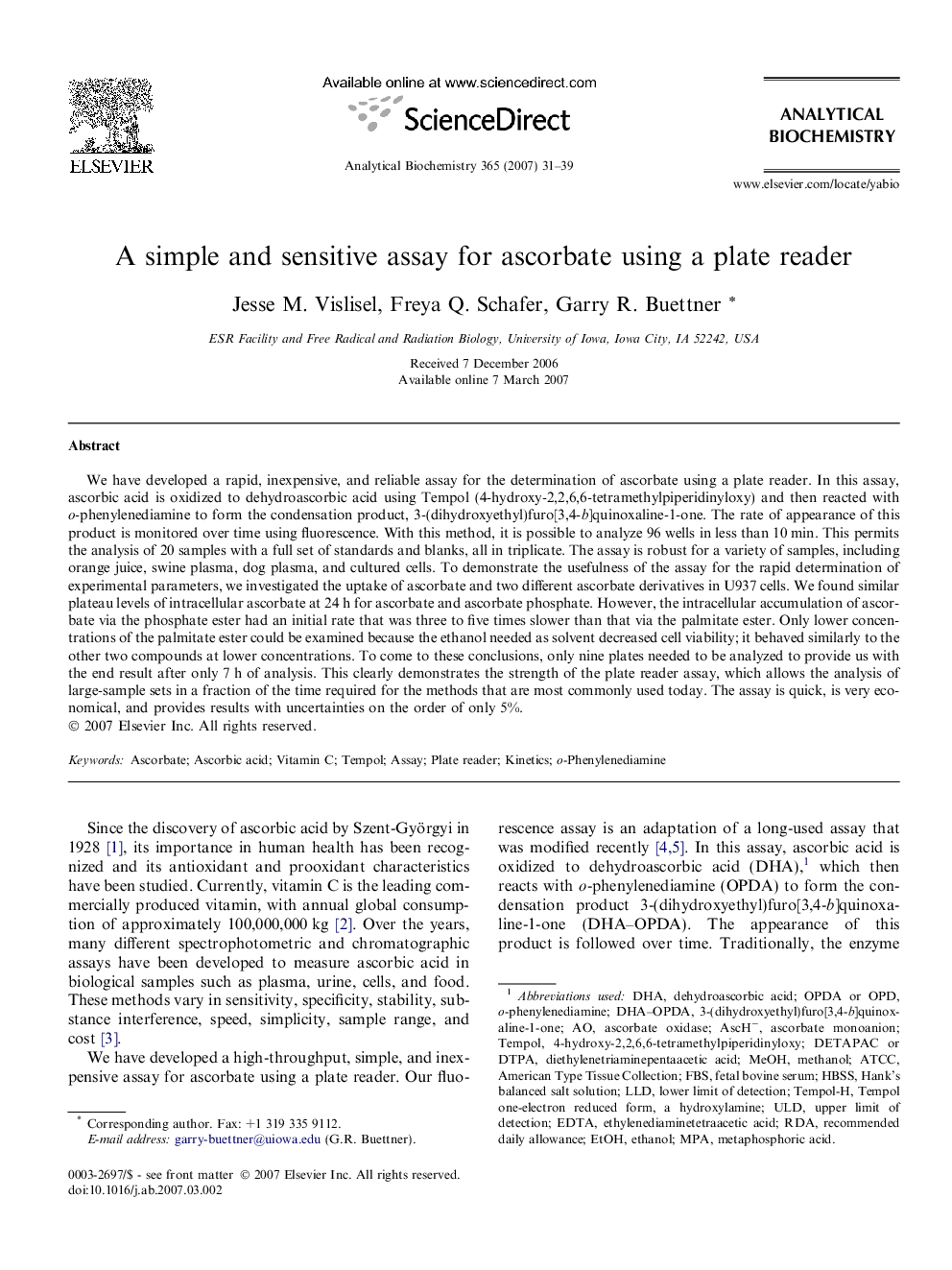| Article ID | Journal | Published Year | Pages | File Type |
|---|---|---|---|---|
| 1176659 | Analytical Biochemistry | 2007 | 9 Pages |
We have developed a rapid, inexpensive, and reliable assay for the determination of ascorbate using a plate reader. In this assay, ascorbic acid is oxidized to dehydroascorbic acid using Tempol (4-hydroxy-2,2,6,6-tetramethylpiperidinyloxy) and then reacted with o-phenylenediamine to form the condensation product, 3-(dihydroxyethyl)furo[3,4-b]quinoxaline-1-one. The rate of appearance of this product is monitored over time using fluorescence. With this method, it is possible to analyze 96 wells in less than 10 min. This permits the analysis of 20 samples with a full set of standards and blanks, all in triplicate. The assay is robust for a variety of samples, including orange juice, swine plasma, dog plasma, and cultured cells. To demonstrate the usefulness of the assay for the rapid determination of experimental parameters, we investigated the uptake of ascorbate and two different ascorbate derivatives in U937 cells. We found similar plateau levels of intracellular ascorbate at 24 h for ascorbate and ascorbate phosphate. However, the intracellular accumulation of ascorbate via the phosphate ester had an initial rate that was three to five times slower than that via the palmitate ester. Only lower concentrations of the palmitate ester could be examined because the ethanol needed as solvent decreased cell viability; it behaved similarly to the other two compounds at lower concentrations. To come to these conclusions, only nine plates needed to be analyzed to provide us with the end result after only 7 h of analysis. This clearly demonstrates the strength of the plate reader assay, which allows the analysis of large-sample sets in a fraction of the time required for the methods that are most commonly used today. The assay is quick, is very economical, and provides results with uncertainties on the order of only 5%.
